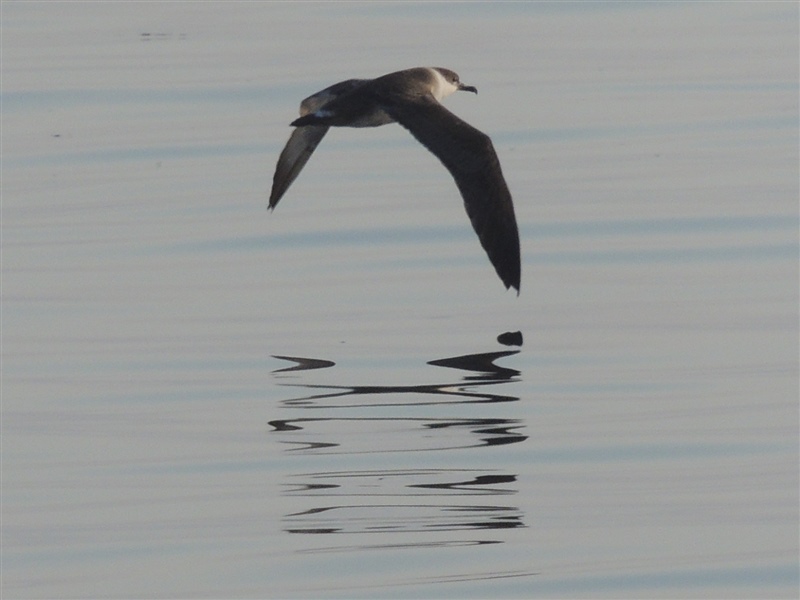Coastal seabirds have experienced significant die-offs in Western Alaska the past few years. But recent results from over a decade of research suggest that offshore birds are also feeling the impact of low ice and warming ocean temperatures in the Bering Sea.
“During this warm period, there was low abundance of birds, or they shifted their distribution. Overall, there was little reproductive success for seabirds, particularly in the Northern Bering Sea.”
-Kathy Kuletz
Kathy Kuletz is lead seabird biologist for Migratory Bird Management with U.S. Fish and Wildlife Service. In a Strait Science presentation on February 11, she shared research findings on birds that spend a majority of their lives at sea.
During the warm period from 2015 to 2019, Kuletz says that bird species that feed off the surface of the water fared a little better than birds that dive for their food. However, in the Northern Bering Sea, groups of murres and other surface-feeding birds overall seemed to decrease, while more of the diving birds increased.
“With the fish-eating birds, the eastern murres, puffins, murres, guillemots, all combined, they show quite a dramatic shift towards lower abundance after 2014 and 2015. On the other hand … the plankton-eaters, which are three species of auklets in this case, have increased during that period, from 2015-2019 in the Northern Bering Sea.”
-Kathy Kuletz
There have also been numerous changes in distribution. Thick-billed murres, for instance, decreased in the Northern Bering and Southern Chukchi seas, yet increased in the central and Northern Chukchi Sea. Meanwhile auklets did the opposite; they decreased in the north and increased in the south.
Overall, Kuletz says that every bird species responded differently to warming waters and a lack of sea ice in recent years.
“So we have some species that have declined like the common murres, some that have shifted their distribution a little bit north like the thick-billed murres. And then [some species], like the short-tailed shearwaters here, have gone dramatically further north and concentrated in the Chukchi during these warm years.”
-Kathy Kuletz
More long-term research is needed to understand why these changes in distribution and abundance are happening in seabirds. One potential cause is food scarcity. Quoting research done by NOAA’s Dr. Dave Kimmel, Kuletz says that the zooplankton community in the Northern Bering Sea was significantly lower in 2019 than in 2017, and that a majority of the community was small copepods. Seabirds like auklets rely on large copepods to feed their young.
Kuletz speculates that the lower abundance and quality of prey has to do with the diminishing cold pool in the Bering Sea.
“Without the ice in the Bering Sea, there was no cold pool, for the first time ever in 2018, no thermal barrier, and this resulted in a lot of very large, predatory fish coming up into the Northern Bering Sea and even into the Chukchi. This was potential competition for forage fish and zooplankton, we don’t know for sure, but there was definitely some impact.”
-Kathy Kuletz
Looking to the near future for studying offshore birds and the permanence of these changes, Kuletz says that Fish and Wildlife has partnered with USGS for a new risk assessment. They plan on purchasing automatic identification system data from large vessels that traverse the Bering Sea.
With this data, researchers can overlay the ships’ track lines with seabird migration patterns and colonies, and ultimately understand species and areas of risk. This could also help shipping traffic in these lanes avoiding high-risk areas.
Image at top: A shearwater in flight. Photo courtesy of NOAA’s Photo Collection.





